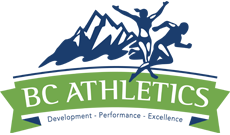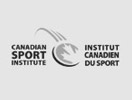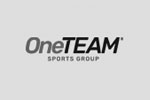Course Certification FAQs
Race Director FAQs
What is the difference between sanctioning and course certification?
Sanctioning and course certification are two entirely separate functions. A sanctioned event can be run on an uncertified course; and certified courses may be associated with unsanctioned events.
Sanctioning is concerned with risk management and the safety of the event. Course certification acknowledges that the course has been accurately measured in accordance with international standards. Sanctioning is valid for one year and is subject to yearly review and re-application. A course certification is valid for 10 years (5 years for IAAF/AIMS certifications), or until the course changes.
For more information on sanctioning your event, click here.
Why should I certify my course?
When participants enter a race advertised to be of a certain distance, they have a reasonable expectation that the distance be accurate. The certification program is very important to the average runner, as well as those of exceptional speed. Most runners like to compare performances run on different courses and such comparisons are very difficult if course distances are not reliable. No one can establish a personal best if courses are not accurate.
For any road-running performance to be accepted as a record, or be included in national or provincial rankings, it must be run on a certified course. The inclusion of performances in rankings can add to the prestige of the event.
How do I get my course certified?
The easiest way is to have a qualified course measurer, who is familiar with the measurement procedures, and has all the necessary equipment, take care of it. Contact clifton.cunningham@bcathletics.org, or phone 604-333-3553 to find a course measurer in your area. A list of active measurers in Canada can be found at: http://www.acroad.ca/Directors/CourseMeasurement/
How much will it cost to certify my course?
Course measurers usually expect to be compensated for the time they spend measuring a course. This usually includes reimbursement for out of pocket expenses, and an honorarium for the work performed. And a complimentary entry to your event is often appreciated. Contact the course measurer for an estimate of the cost for a specific race.
In addition, there is a formal certification fee that offsets the costs of certification. This fee is $50.00 per certificate. If your event includes multiple race distances, you will require a certificate for each distance. An additional fee is required if a separate calibration course is needed. New calibration courses are not usually required in most major urban areas.
Once approved, the course certification is valid for 10 years (5 years for IAAF/AIMS certifications), provided the course does not change at all.
How long will it take to measure and certify my course?
The actual measurement process can usually be done in a day (two for longer or more complex courses). But time is also needed to analyze the data, adjust the course if required, prepare the documentation including a map of the course, and apply for the certificate. Sometimes a police escort may be required, if the course measurer does not feel safe measuring your course in live traffic.
Please allow at least 2 months in advance of your event to measure a course. Most measurers have full time jobs, so need to schedule a convenient time.
What do I need to do before my course can be certified?
Before seeking a measurement you should have a confirmed route for your course (negotiated with the police and municipal authorities as necessary) which you believe to be approximately the correct length. It is best to measure the distance approximately from large-scale maps or using a GPS unit or calibrated bicycle odometer. Measurement by a car odometer will most likely be short by 5% or more and caution should be used with GPS devices as, depending on signal strength, the error can be large. You should consider what section of each road on the course will be open for use by the runners on race day. If it is not the entire road width then you must clearly state any restrictions. Include the exact route to be taken at turns and the precautions that will be taken to prevent corner-cutting.
Even with your attention to these details the measurer may need to adjust your course to obtain the correct distance. To allow for this you should consider in advance where extra distance may be added (or subtracted): at the start, the finish, a turnaround or through a route change along the course.
And, as a minimum, review the course with the measurer in advance and be available for consultation on the day the measurement is done.
What should I do once my course has been certified?
Once your course has been certified, you will receive a certificate with a course ID number. On your race entry forms and website, publish this course certification ID, and include a link to this webpage to provide additional information about what it means.
On race day, be sure to layout the course in accordance with the certificate and map. If the course is not laid out exactly as measured, the distance run will not be accurate, and times will be invalid for record and ranking purposes. Be sure that lead vehicles, lead cyclists and course marshalls are also familiar with the route.
Remember, the certificate expires after 10 years, at which time the course will need to be re-certified.
Can I measure my course myself?
Yes, if you follow the process described in the Course Measurement Procedures Manual, which can be found here http://www.acroad.ca/Directors/CourseMeasurement/.
I measured my course using a GPS unit/Google Maps, is that good enough?
No. In order for a course to be certified, it must be measured using the Calibrated Bicycle Method and the Shortest Possible Route. This produces a measurement that will ensure the distance run is at least the advertised distance. The method, as with most certification processes, has a margin of error. The margin of error is one metre per kilometre, an accuracy that cannot be achieved by other methods.
Where can I learn more about course measurement?
The Athletics Canada / Run Canada Committee Road Race Course Measurement website http://www.acroad.ca/Directors/CourseMeasurement/.







